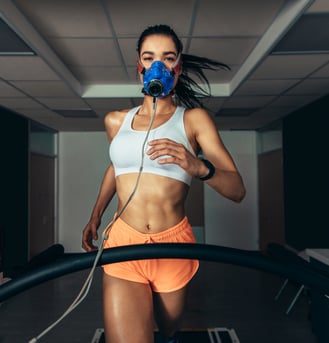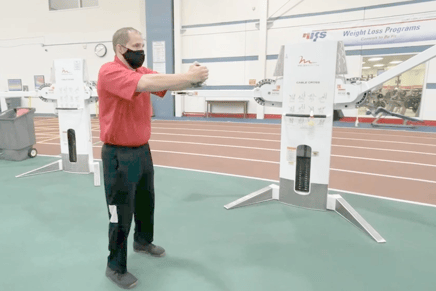 As we ring in the New Year, many are thinking about what they want out of 2026 and are forming new goals and resolutions. According to Forbes, a whopping 48% of those goals are fitness related, with another 34% making weight loss resolutions and 32% making dietary resolutions. Looking at the stats, it’s clear that people have a vested interest in their health and are conscious of needed improvements. On average, 80% of New Year’s resolutions are abandoned by February and only 9-20% achieve their goal by the end of the year. This is such a prevalent issue that the second Friday in January is called “Quitter’s Day”. To overcome this, let’s be smart this year. Instead of making vague and unrealistic goals, I’m going to tell you how to make SMART goals!
As we ring in the New Year, many are thinking about what they want out of 2026 and are forming new goals and resolutions. According to Forbes, a whopping 48% of those goals are fitness related, with another 34% making weight loss resolutions and 32% making dietary resolutions. Looking at the stats, it’s clear that people have a vested interest in their health and are conscious of needed improvements. On average, 80% of New Year’s resolutions are abandoned by February and only 9-20% achieve their goal by the end of the year. This is such a prevalent issue that the second Friday in January is called “Quitter’s Day”. To overcome this, let’s be smart this year. Instead of making vague and unrealistic goals, I’m going to tell you how to make SMART goals!
SMART Goals Explained
SMART is an acronym used to guide your goal setting, and it stands for the following:
Specific – be as detailed as possible. If you don’t set up a goal post, how will you ever know if you reached your goal? For example, instead of saying “I want to eat healthier this year” you could say “I want to eat healthier this year by eating 3-5 servings of fruits and vegetables a day.” That way you’re setting parameters that you’re aware of and know what direction to go with your healthy eating
Measured – make it trackable. You should be able to track your progress on your way to your goal, so you know how close you are to completing it. A good way to make your goal easy to measure is by making it quantifiable. That way you just have a number to work towards, letting you know where you are on your journey. A good example would be “I want to add 20lbs to my bench max” instead of “I want to get stronger.”
Achievable – set a realistic goal. There’s nothing wrong with being confident when setting your goals, as long as you’re REASONABLY confident! For example, if you were to set a goal like “I want to lose 50lbs by the end of this week!!!” you would be setting yourself up for failure or disappointment. Sometimes setting smaller goals leading to your main goal can help! “I want to lose 3lbs this month” this can help you reach that larger weight loss goal by the end of the year.
Relevant – as in salient. The work you’re doing should contribute towards whatever goal you set for yourself. While that may seem obvious, it’s easy to find yourself having pushed hard in the wrong direction if you don’t do the necessary research. For example, if you set a goal of
making advancements in your fitness career, and you start studying for the Bar Exam, you will not have made any progress.
Time-Bound – set a deadline. While deadlines usually induce stress, by giving yourself a time limit you’ll be more urgent in chasing your goals! It's easy to fall victim to procrastination when you have no clear time to start, but by setting a time limit and lighting a fire you’ll be much more likely to start sooner rather than later!
Now that you’re SMARTer…
Be sure to use these tips this new year when setting your goals. Let this year be the year that you carry out everything you set out to. And of course, if you have any questions or need any help setting SMART goals, come schedule an Exercise Prescription for free at the Fitness Center Desk! Have a wonderful 2026!


 Everyone knows that routine exercise benefits your heart and overall health in the long term, but what do those benefits look like? When we start exercising, we can experience benefits almost immediately, and even after months of training, our body continues to adapt. The key is to find a routine that best fits you and stick with it—because if we stop exercising, our body can lose the adaptations it made.
Everyone knows that routine exercise benefits your heart and overall health in the long term, but what do those benefits look like? When we start exercising, we can experience benefits almost immediately, and even after months of training, our body continues to adapt. The key is to find a routine that best fits you and stick with it—because if we stop exercising, our body can lose the adaptations it made. We all know regular exercise is great for your heart and overall health, but what does that actually mean? The truth is, the benefits of exercise can start almost immediately, and your body continues to adapt over time as you stick to your routine. The key is consistency: finding an exercise routine that works for you and maintaining it. If you stop exercising, your body can lose the adaptations it worked hard to achieve.
We all know regular exercise is great for your heart and overall health, but what does that actually mean? The truth is, the benefits of exercise can start almost immediately, and your body continues to adapt over time as you stick to your routine. The key is consistency: finding an exercise routine that works for you and maintaining it. If you stop exercising, your body can lose the adaptations it worked hard to achieve.
 Conjugate training is a term coined and expanded upon by the late, great Louie Simmons, a well-known strength coach at
Conjugate training is a term coined and expanded upon by the late, great Louie Simmons, a well-known strength coach at 
 VO2 max testing, or graded exercise testing, is a treadmill run or cycle to volitional fatigue—or pretty much going until you must stop. The test will tell us how many liters of oxygen you are able to take in and use for cellular respiration.
VO2 max testing, or graded exercise testing, is a treadmill run or cycle to volitional fatigue—or pretty much going until you must stop. The test will tell us how many liters of oxygen you are able to take in and use for cellular respiration.  While training your cardiovascular system, it is important to understand how much you are stressing and overloading the system. Just like with your musculoskeletal system, there is a maximum rate your heart can achieve. The best way to discover this number is to undergo a maximal aerobic capacity test, but it isn’t necessarily practical or safe for all populations.
While training your cardiovascular system, it is important to understand how much you are stressing and overloading the system. Just like with your musculoskeletal system, there is a maximum rate your heart can achieve. The best way to discover this number is to undergo a maximal aerobic capacity test, but it isn’t necessarily practical or safe for all populations.  We all know that core stability and strength is an important factor in exercise, athletics, and even daily living. Being able to properly brace and stiffen the core is an important skill in preventing lower-back injuries when attempting certain movement patterns that occur every day. The abdominal crunch, which people often think of as a core exercise, is actually not a movement we see in our day-to-day lives. Try and think of a time you have had to mimic the abdominal crunch under a heavy load: it simply does not occur.
We all know that core stability and strength is an important factor in exercise, athletics, and even daily living. Being able to properly brace and stiffen the core is an important skill in preventing lower-back injuries when attempting certain movement patterns that occur every day. The abdominal crunch, which people often think of as a core exercise, is actually not a movement we see in our day-to-day lives. Try and think of a time you have had to mimic the abdominal crunch under a heavy load: it simply does not occur. 